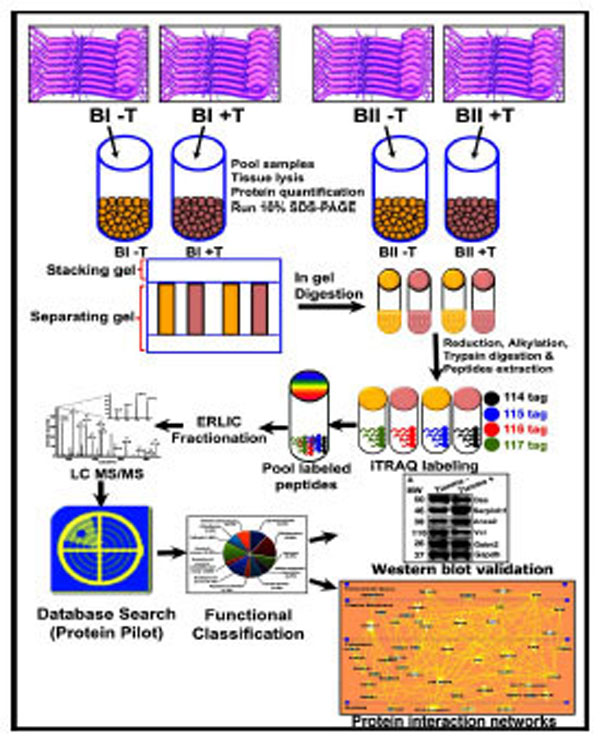Fig. (1) Schematic representation of the experimental design and
the quantitative proteomics analyses showing biological and technical
replicates. Following tianma treatment (batches B-I (5 rats) and
B-II (5 rats): +T; control = B-I (5 rats) and B-II (5 rats): -T) and
aortic tissue lysis, protein extracts were acetone precipitated and
quantified. These were then run in SDS-PAGE and subsequently
digested. The quantitative proteomics analyses of aortic tissue
lysates were performed by labeling with multi-plex isobaric tags
(114, 115, 116 and 117) for relative and absolute quantification
(iTRAQ) followed by Electrostatic Repulsion-Hydrophilic Interaction
Chromatography (ERLIC)-based fractionation, and liquid
chromatography coupled with tandem mass spectrometry (LCMS/
MS)-based multidimensional protein identification technology.
The obtained data was analyzed using ProteinPilot software and
validated by quantitative western blots. Finally, proteins were functionally
classified into various subgroups.


